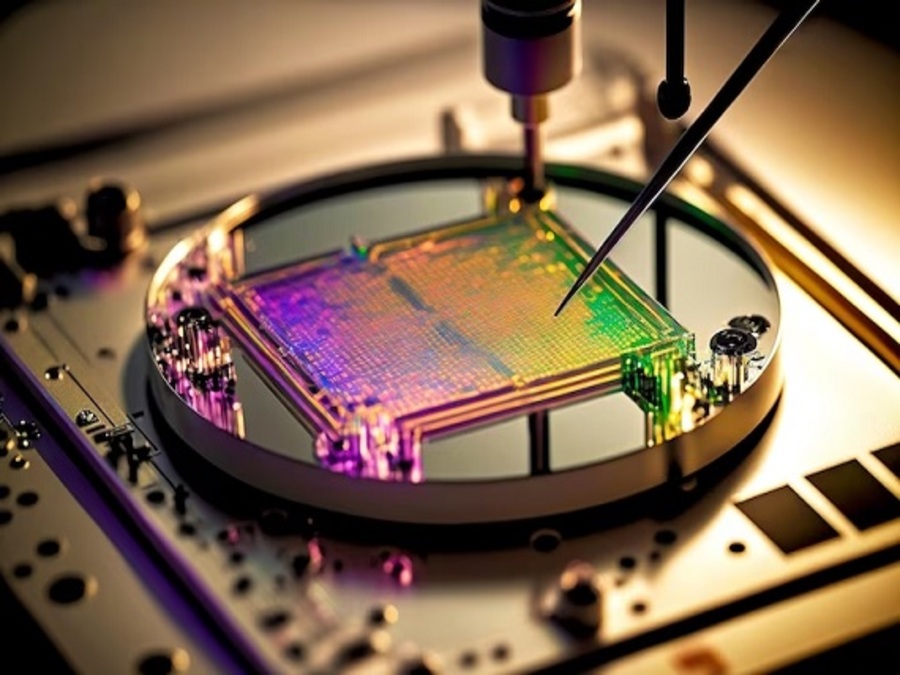Quantum-Dot Transistors: Pioneering Nanoelectronics
In the pursuit of ever smaller and more efficient electronic devices, quantum-dot transistors have emerged as promising candidates at the forefront of nanoelectronics. These transistors harness the unique properties of quantum dots, nanoscale semiconductor particles, to manipulate and control electron flow with unprecedented precision.
The fundamental principle underlying quantum-dot transistors lies in the discrete energy levels exhibited by quantum dots, which are highly sensitive to their size and composition. Unlike traditional transistors that rely on bulk semiconductor materials, quantum-dot transistors exploit the quantum confinement effect, wherein electrons become confined within the dimensions of the quantum dot, leading to quantized energy states.
This confinement enables quantum-dot transistors to exhibit remarkable electronic properties, including enhanced tunability, reduced leakage currents, and superior switching characteristics compared to their conventional counterparts. By leveraging the quantum mechanical behavior of electrons within these nanoscale structures, quantum-dot transistors offer a pathway towards realizing high-performance, low-power electronic devices crucial for advancing computing, communication, and sensing technologies.
Furthermore, the versatility of quantum-dot materials allows for tailoring their properties to suit specific device requirements, offering immense flexibility in transistor design and functionality. From single-electron transistors to advanced logic gates and quantum computing elements, quantum-dot-based devices hold the potential to revolutionize the landscape of electronics by enabling unprecedented levels of integration and functionality.
Methodology Of Quantum Dot Transistor
Materials Selection and Synthesis: Identify suitable semiconductor materials for quantum-dot synthesis based on desired electronic properties and compatibility with fabrication processes.
Device Design and Fabrication: Design the layout and structure of the quantum-dot transistor, including electrode configurations, gate dimensions, and quantum-dot placement.
Device Assembly and Integration: Deposit source, drain, and gate electrodes onto the substrate using techniques such as physical vapor deposition or sputtering. Implement dielectric layers to insulate and protect the transistor components, ensuring proper electrical isolation and stability.
Characterization and Testing: Perform comprehensive electrical and optical characterization of the quantum-dot transistor to evaluate key performance metrics such as carrier mobility, threshold voltage, on/off ratio, and switching speed.
Performance Optimization and Device Tuning: Identify factors influencing device performance and explore strategies for enhancing transistor characteristics, including optimization of fabrication parameters, material selection, and device geometry.
Integration into Functional Systems: Integrate quantum-dot transistors into larger electronic circuits and systems for applications such as logic gates, memory devices, and sensor arrays. Explore compatibility with existing semiconductor technologies and explore novel architectures for realizing advanced functionalities and performance enhancements.
Futures of Quantum-Dot Transistor
Enhanced Performance: Continued innovations in materials science and fabrication techniques are expected to yield quantum-dot transistors with improved performance metrics, including higher switching speeds, lower power consumption, and enhanced reliability.
Integration and Scaling: The scalability of quantum-dot transistors will be a focal point for future research endeavors. Efforts to integrate large arrays of quantum dots on a single chip and develop scalable fabrication processes are crucial for realizing practical applications in quantum computing, neuromorphic computing, and beyond.
Hybrid and Heterogeneous Integration: Hybrid integration approaches combining quantum dots with other nanomaterials, such as 2D materials, organic semiconductors, and topological insulators, hold great potential for expanding the functionality and performance capabilities of quantum-dot transistors. Heterogeneous integration of complementary materials enables the design of multifunctional devices with tailored properties and novel functionalities, paving the way for next-generation electronics and optoelectronics.
Emerging Applications: Beyond traditional computing paradigms, quantum-dot transistors are poised to find applications in a diverse range of emerging fields, including quantum information processing, neuromorphic computing, photonics, and bioelectronics.
Quantum Communication and Sensing: Quantum-dot transistors are expected to play a pivotal role in advancing quantum communication and sensing technologies. Integrated quantum-dot devices hold promise for realizing efficient single-photon sources, quantum repeaters, and quantum sensors capable of detecting minute changes in environmental conditions with high precision and sensitivity. These advancements have far-reaching implications for secure communication, quantum metrology, and medical diagnostics.
Application Of Quantum-Dot Transistor
One of the most promising applications of quantum-dot transistors lies in the realm of quantum computing. Quantum-dot transistors offer a pathway towards realizing qubits, the fundamental units of quantum information processing, with unparalleled precision and scalability. In quantum computing, the ability to manipulate and control individual quantum states is paramount for performing complex computational tasks exponentially faster than classical computers. Quantum-dot transistors, with their ability to confine electrons within nanoscale dimensions and precisely control their energy levels, serve as ideal building blocks for constructing qubits. The discrete energy levels of quantum dots enable them to function as stable quantum states, offering robust platforms for encoding and processing quantum information.
Moreover, the scalability and tunability of quantum-dot arrays pave the way for designing interconnected qubit networks, essential for performing quantum operations and implementing quantum algorithms. Quantum-dot transistors provide the necessary control mechanisms for initializing, manipulating, and reading out qubit states, facilitating the realization of fault-tolerant quantum computation. In addition to quantum computing, quantum-dot transistors find applications in other fields such as quantum cryptography, quantum sensing, and quantum communication. The application of quantum-dot transistors in quantum computing represents a transformative leap towards realizing the full potential of quantum information processing.
Source

